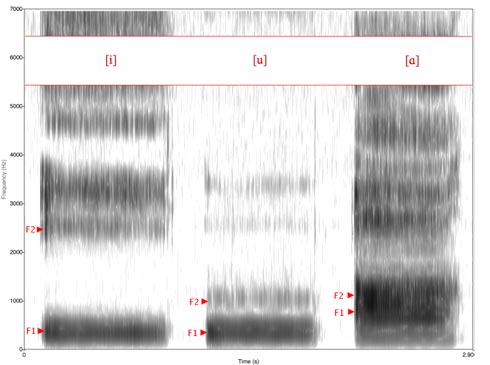

I see that the same is happening in the blog post you link to. A Formant object represents spectral structure as a function of time: a formant contour. However, Praat can be used for more than simply plotting formants. In the second case, you're asking for the time of the points in the PointProcess, rather than the time samples at which the formants were estimated. It also explains why you get the same points, but a rougher (interpolated) curve in your plots. In the first case, that's why you always get the same number of points (time points in pointProcess), while you want the number of "frames" in formants. It seems that both issues have the same underlying cause: you are using to query the length of or the PointProcess object, or using that object convert the index to time, but afterwards use the results for the Formant object. Here I am plotting f1 for both time_steps, but it is still the same length (323) and timepointsįor the record: the original question was asked on Gitter as well (or at least this question was linked to) see I can not get the sample rate I'd like (eg 30 Hz). T = praat.call(pointProcess, "Get time from index", point)į1 = praat.call(formants, "Get value at time", 1, t, 'Hertz', 'Linear')į2 = praat.call(formants, "Get value at time", 2, t, 'Hertz', 'Linear')į3 = praat.call(formants, "Get value at time", 3, t, 'Hertz', 'Linear') NumPoints = praat.call(pointProcess, "Get number of points") Spectral slices (or cross-sections) show the amplitude/frequency spectrum at a selected moment in the signal. Window_length = 0.01 # or 0.002 see pictureįormants = praat.call(sound, "To Formant (burg)", time_step, max_formant_num, max_formant_freq, window_length, preemphasis) Preliminaries You should already be familiar with Making spectrograms and What are formants Click LhereL to go directly to a Quick guide to spectral analysis instead. PointProcess = praat.call(sound, "To PointProcess (periodic, cc)", f0min, f0max)

If I change the time_step (and also time window), length of the formant list is not changing. It can even run some basic perceptual experiments. It is primarily intended for acoustic analysis of speech, but it has some additional functions such as speech synthesis and some constraint-based grammar learners. So my struggle is, that I need formants in a specific sampling rate but I cant change it here. Praat is a freely available program written by Paul Boersma and David Weenink. I'm super new to praat parselmouth in python and I am a big fan, as it enables analyzes without Praat.


 0 kommentar(er)
0 kommentar(er)
